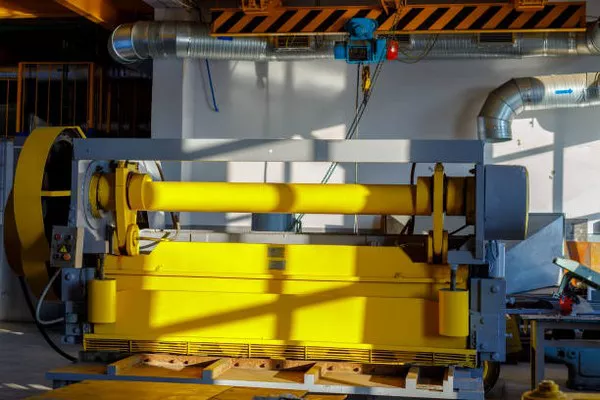Generators serve as reliable backup power sources during outages or when you need power in remote locations. Among the various sizes available, the 7000-watt generator stands out for its versatility. This article explores what appliances and devices a 7000-watt generator can run, helping you determine if it fits your power needs.
Understanding Generator Ratings
What Does “7000 Watts” Mean?
A generator’s wattage rating indicates its maximum output. A 7000-watt generator can provide up to 7000 watts of power, allowing it to run multiple devices simultaneously. However, it’s essential to differentiate between starting watts and running watts:
Starting Watts: The initial surge of power needed to start devices, particularly motors.
Running Watts: The continuous power required to keep devices running.
Calculating Power Needs
To determine what a 7000-watt generator can run, you need to know the wattage of the devices you intend to use. Each appliance typically lists its wattage on a label.
List of Appliances: Identify the appliances you plan to run.
Calculate Total Wattage: Sum the running watts of all devices.
Consider Starting Watts: For devices with motors, add the starting watts.
Appliances a 7000-Watt Generator Can Run
Household Appliances
A 7000-watt generator can comfortably power a range of household appliances:
Refrigerator: Most refrigerators require about 600-800 watts to run and around 1200-2000 watts to start. A 7000-watt generator can handle both.
Freezer: Similar to refrigerators, freezers typically use 600-800 watts running and 1200-2000 watts starting.
Microwave: A standard microwave consumes around 1000 watts, making it manageable within the generator’s capacity.
Washing Machine: A washing machine generally requires 500-1500 watts running and can spike to 2000 watts when starting.
Dryer: An electric dryer can consume 3000-5000 watts, meaning you’ll need to prioritize which appliances to run simultaneously.
Television: A modern LED TV uses about 100-400 watts, depending on size.
Lights: Incandescent bulbs consume about 60 watts each, while LED bulbs use only about 10-15 watts.
Power Tools and Equipment
For those using tools at construction sites or for DIY projects, a 7000-watt generator can power:
Circular Saw: Uses approximately 1500-2000 watts.
Table Saw: Typically requires 1200-1800 watts.
Drill: Standard drills use about 500-800 watts.
Air Compressor: Can vary widely, generally between 1000-3000 watts.
Heating and Cooling Systems
Space Heater: Usually consumes about 1500 watts.
Window Air Conditioner: A unit may use between 1000-2000 watts depending on its capacity.
Medical Equipment
For those needing backup power for medical devices:
CPAP Machine: A CPAP machine typically requires 30-100 watts.
Oxygen Concentrator: Can range from 300-800 watts.
Running Multiple Devices
A 7000-watt generator can run several devices simultaneously, but careful management is crucial:
Example Scenario: If you run a refrigerator (800 watts), a microwave (1000 watts), and a few lights (200 watts total), your total running load would be 2000 watts. This leaves ample room for starting loads.
Power Management Tips
Stagger Startup: Start devices one at a time to avoid overwhelming the generator.
Monitor Wattage: Keep track of the total wattage you’re using.
Prioritize Essential Devices: Focus on critical appliances during a power outage.
Limitations of a 7000-Watt Generator
While versatile, a 7000-watt generator has limitations:
High-Power Appliances: Devices like electric water heaters or whole-house HVAC systems often exceed this generator’s capacity.
Continuous vs. Surge Power: Continuous running over maximum capacity can damage the generator and the appliances.
Fuel Consumption: Running multiple devices will increase fuel consumption, leading to more frequent refueling.
Choosing the Right Generator
When selecting a generator, consider:
Power Needs: Assess your total wattage requirements.
Portability: A 7000-watt generator can be heavy, so consider one with wheels for easier transport.
Run Time: Look at fuel tank size and efficiency for longer run times.
Type of Fuel: Determine whether you prefer gas, propane, or dual-fuel options.
Maintenance and Care
To ensure optimal performance, regular maintenance is essential:
Oil Changes: Change the oil according to the manufacturer’s recommendations.
Clean Air Filters: Regularly check and clean air filters to maintain efficiency.
Fuel Quality: Use fresh fuel and consider adding fuel stabilizers if stored for long periods.
Testing: Run the generator periodically to ensure it remains functional.
Conclusion
A 7000-watt generator is a versatile power source capable of running a variety of appliances and tools, making it an excellent choice for home backup power or job site needs. By understanding your power requirements and managing loads effectively, you can make the most of this generator’s capabilities. Whether preparing for emergencies or enhancing your outdoor experience, knowing what a 7000-watt generator can run empowers you to keep your world powered.
Related topics:

